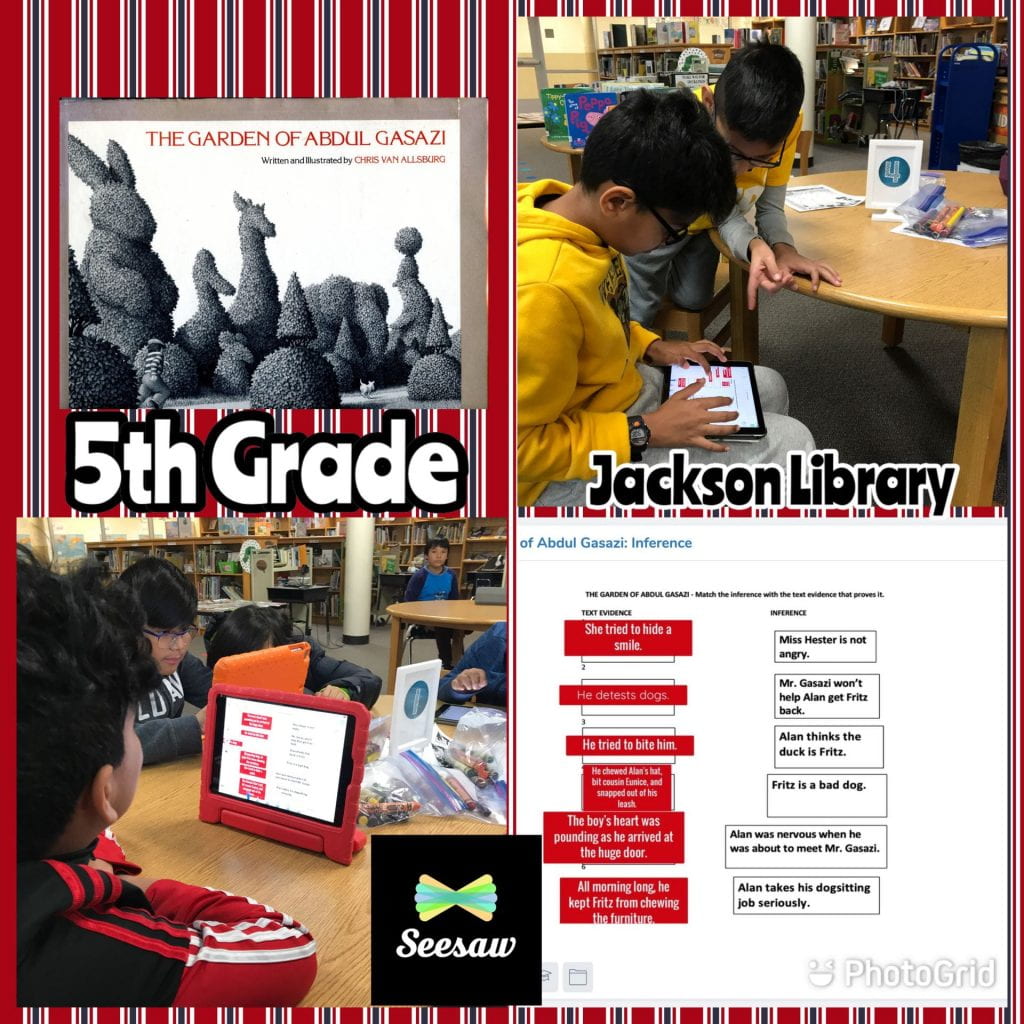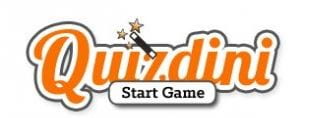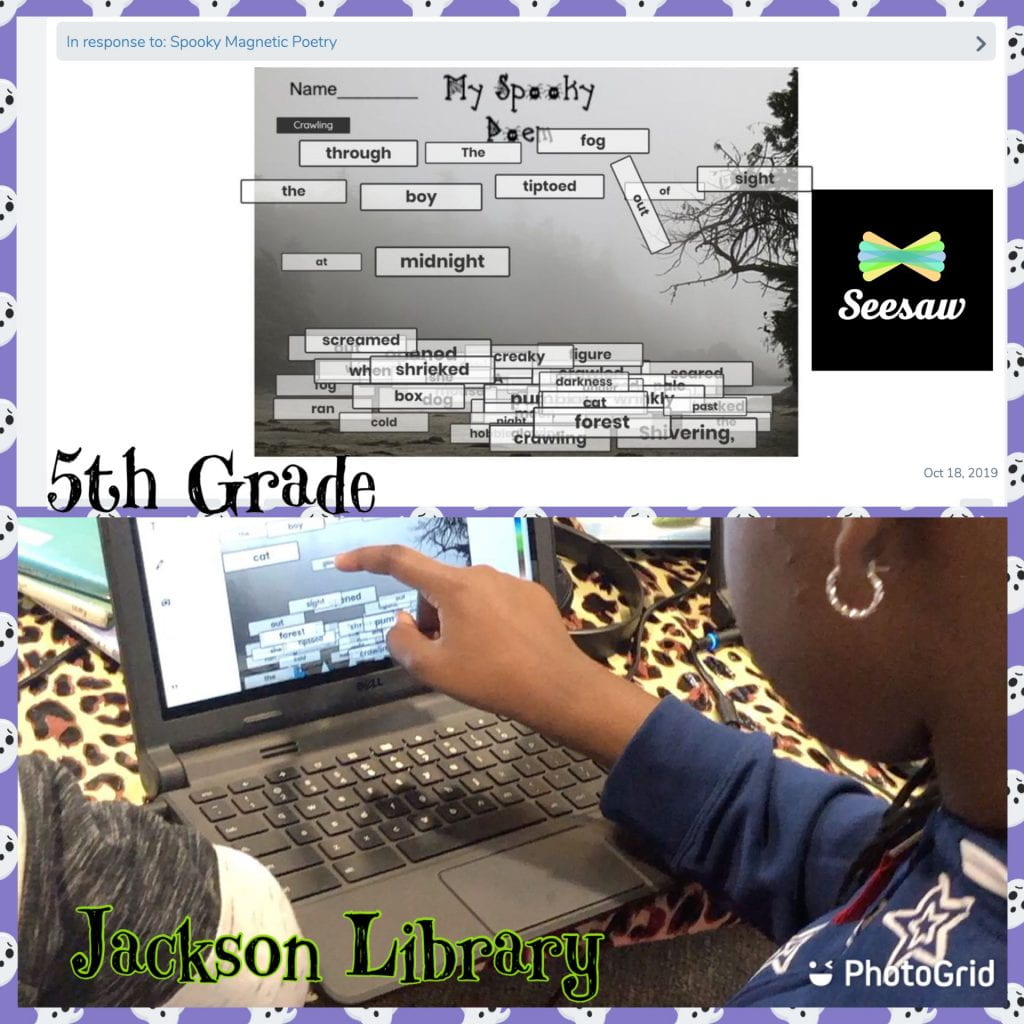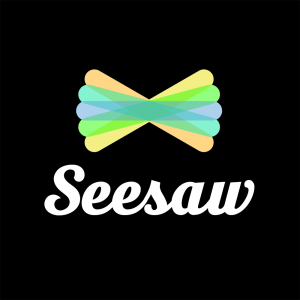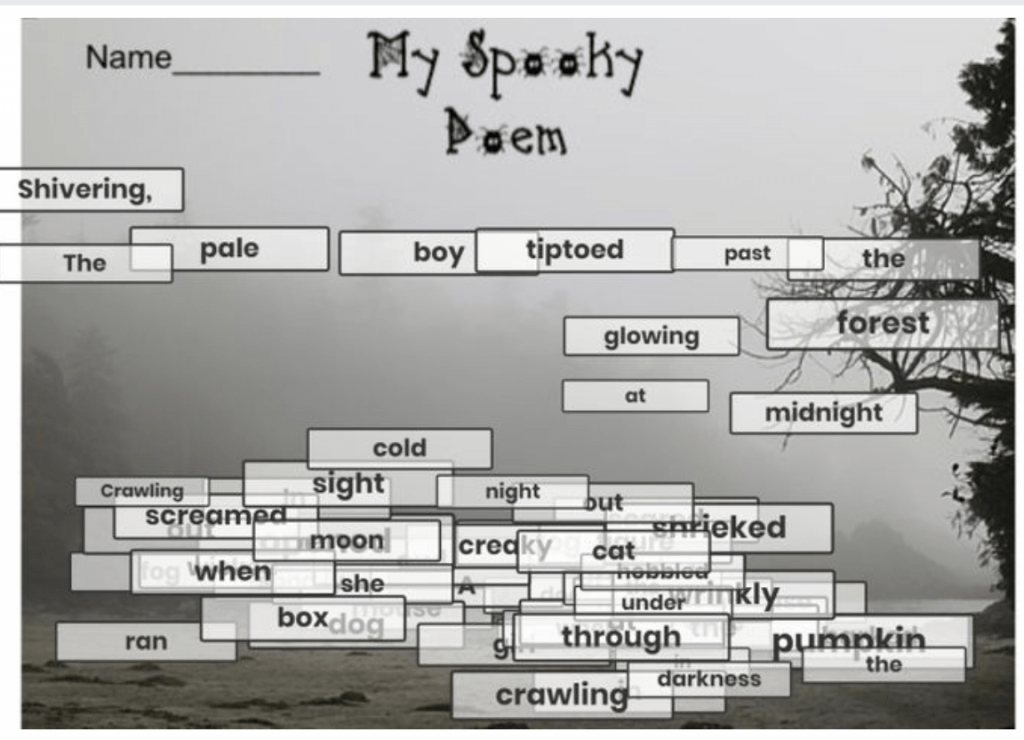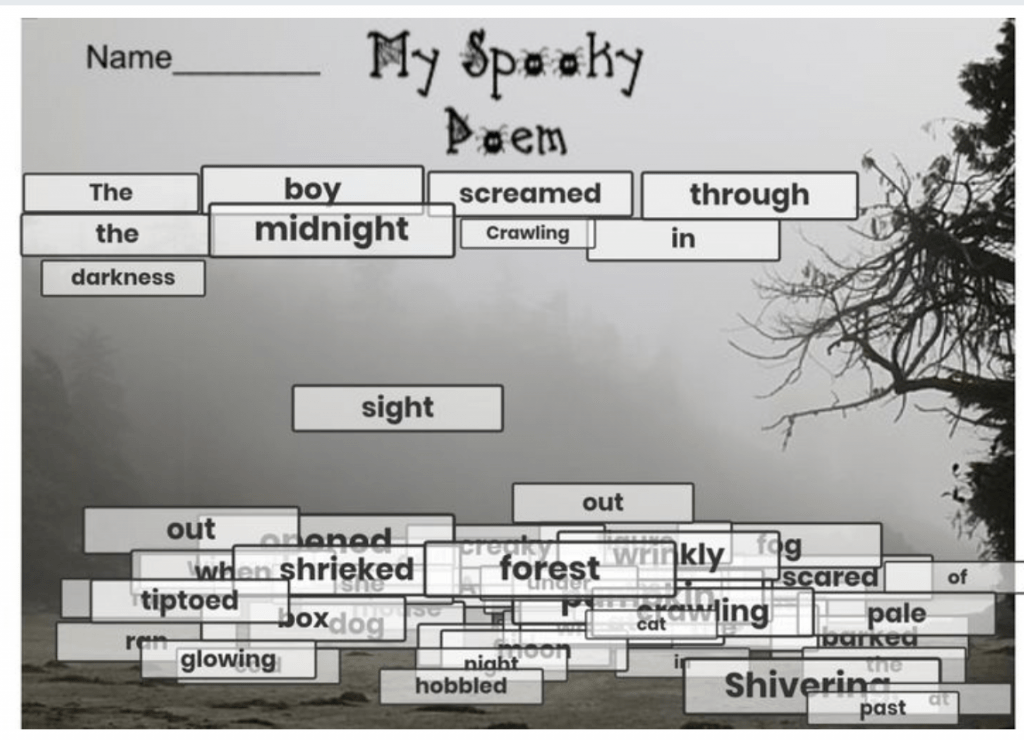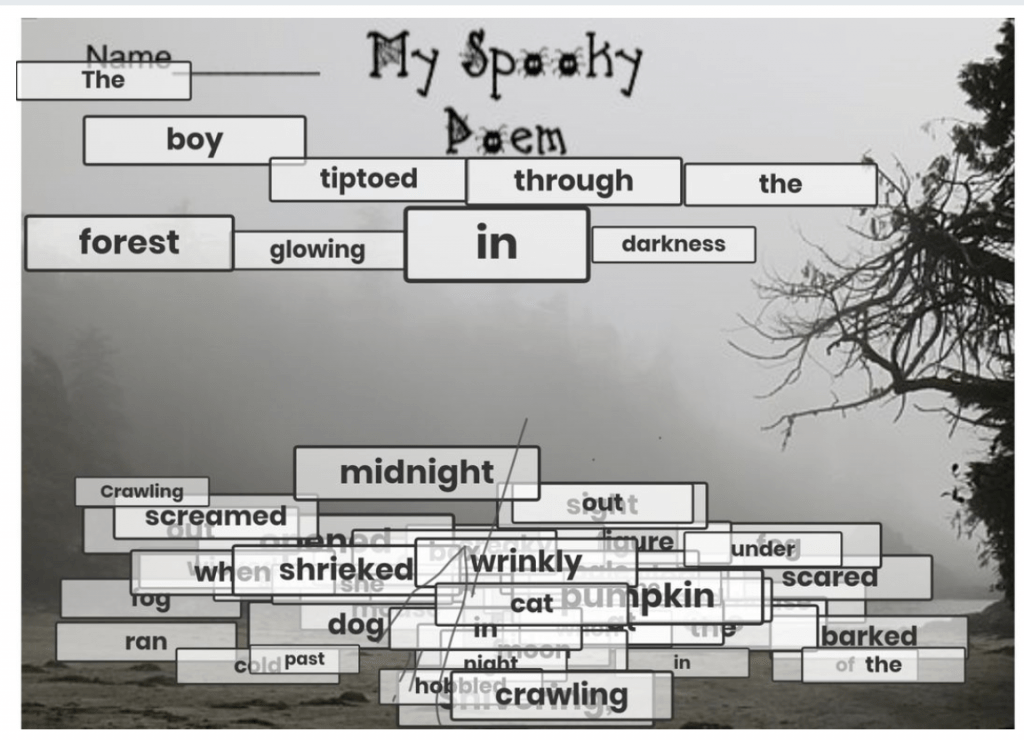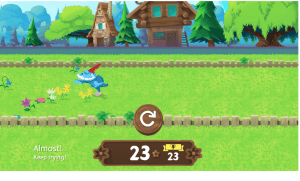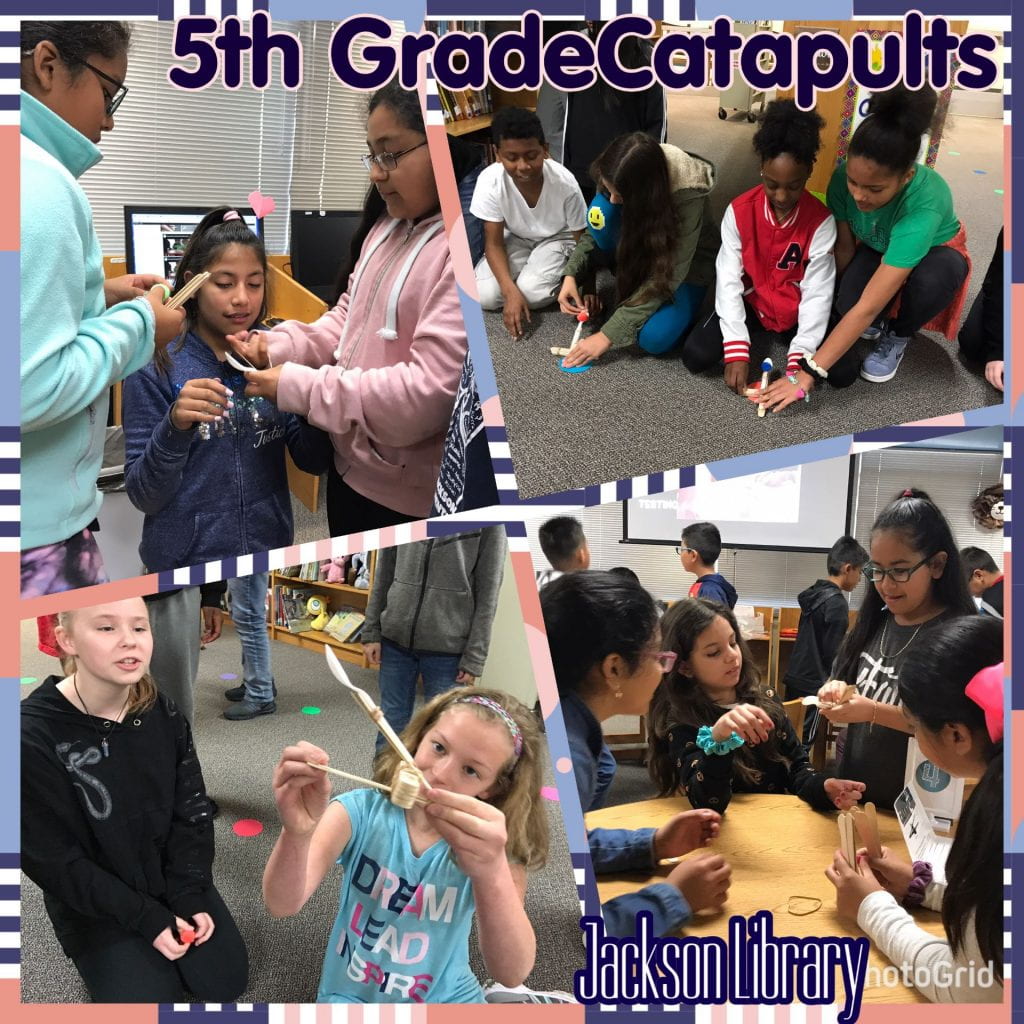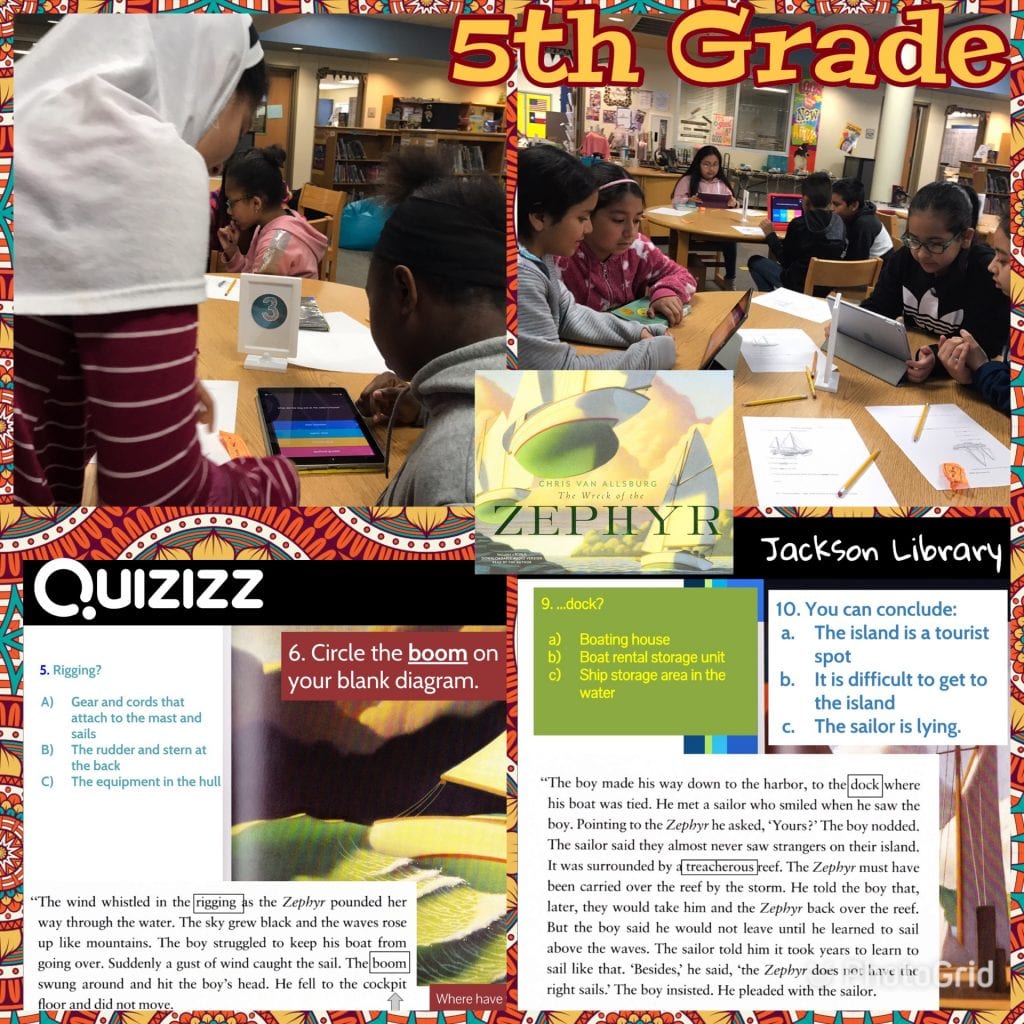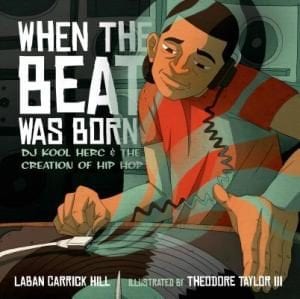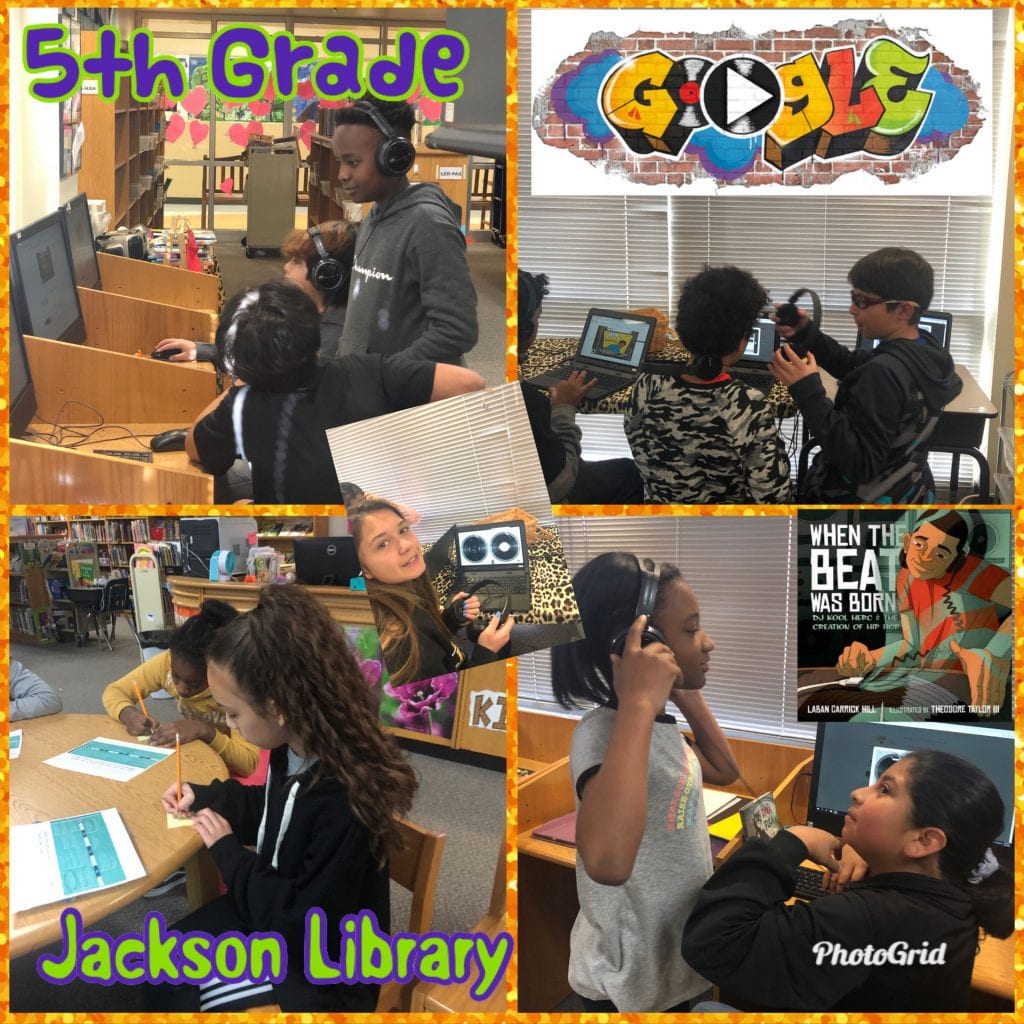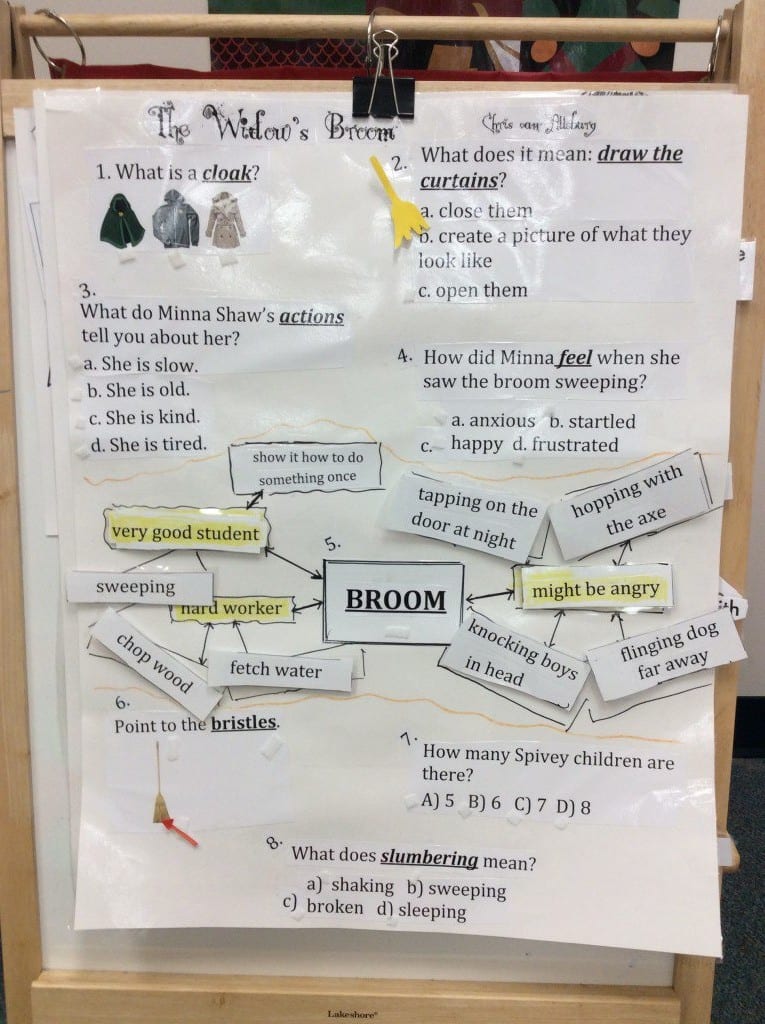This week in the Jackson Library, fifth graders used text evidence to support their inferences after reading The Garden of Abdul Gasazi. I created a Seesaw template for them to use and they worked in pairs to match the text evidence to the inference in the story. We discussed the author’s use of foreshadowing and the items in the Anchorage District text evidence chart below.

Text Evidence Chart from Anchorage District
| Text Dependent Questions | Answers |
| Reread page 398. What evidence from the text can you cite to defend the idea that Alan takes pet-sitting Fritz seriously? | He won’t let Fritz out of his sightHe keeps Fritz from chewing furniture |
| Reread the last sentence on page 398 when Alan hides his hat under his shirt. This is an example of foreshadowing. Where in the story does Alan’s hat reoccur? |
Pg 408- the duck steals Alan’s hat Pg 412- Fritz has the hat when he is waiting for Alan on the porch |
| Reread page 400. Based on the first paragraph, how can you tell that Alan has no control over Fritz? |
Fritz bites Alan Frtiz drags him out of the houseFritz leads him across the bridge |
| On page 400, the author uses all capital letters on the sign. Why do you think the author did this? How would the mood be different if the author did not do this? | Capital letters often denote yelling or intense feelings or emotions. |
| Chris Van Allsburg wants the reader to notice that Fritz is out of control. What words or phrases on page 400 does the author use to portray Fritz in this light? |
Fritz has to be dragged out of the house Fritz gives a tremendous tugFritz snaps out of his collar Fritz bolts straight ahead |
| How is the author using the illustrations and word choice to create suspense in this story? (Pg. 402) |
Gasazi’s house is dark and castle-like Lots of shadows used Capital letters used The pages all end on a cliffhanger or leading sentence |
| In the second paragraph, Gasazi states that he “detests” dogs. Using contextual clues what do you think “detest” means? (Pg. 406) |
Gasazi lists all the bad things that dogs doHe uses all capital letters on his warning sign He bellows “I TURN THEM INTO DUCKS!” |
| Why is Alan concerned that Mr. Gasazi might have captured Fritz? (Pg. 400) |
The threatening sign Alan’s knowledge of Fritz’s misbehaviorThe knowledge that Fritz had gone into the forbidden area |
| Reread pages 404-405. What details does that author use to make Mr. Gasazi seem frightening and mysterious? |
The house is dark and largeThe door opens before Alan knocks Mr. Gasazi stands in the shadows |
| Reread pages 400-406. How does the author make sure that the reader knows that Gasazi really does not like dogs? |
Gasazi’s voice sounds like a growl The author writes Gasazi saying “I turn them into ducks!” in capital letters. He states that he “detests dogs” The threatening sign |
| At the beginning of the story we learn that Alan takes pet sitting seriously. What other evidence from the story portrays Alan as a responsible person. Cite evidence from the text to support your answer. |
He is politeHe follows Fritz into the garden although he is scared He admits to Ms Hester that he lost Fritz |
| Reread page 408. What textual clues are there that lead you to believe that Alan really believe Fritz turns into a duck? |
Alan begs Gasazi to turn Fritz back into a dog (406) Alan tells the duck that he “hasn’t changed much” after the duck bites him (408) The duck steals Alan’s hat- a favorite thing of Fritz’s (408) |
| Is Ms. Hester angry at Alan? Use clues from the text and illustrations to support your position. (Pg. 410) |
Ms Hester tries to hide a smile She reassures Alan that Gasazi was just playing tricks The illustrations depict Ms Hester as comforting Alan |
| Why do you think that Chris Van Allsburg choose to end the story with Fritz having Alan’s hat? (Pg. 412) | To add to the mystery of the story; ties into the beginning of the story and the foreshadowing of the hat |
Garden of Abdul Gasazi- After the Story Questions
- Imagine that Alan goes back to talk to Mr. Gasazi about the incident. How will the magician react? Will they become friends? Describe their continuing adventures in writing.
- Imagine that Fritz didn’t come back to Miss Hester’s house. What would Alan have done? Or imagine that Fritz did come back but he remained a duck. How would Alan have explained that to Miss Hester?

